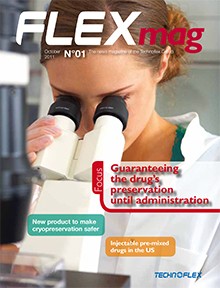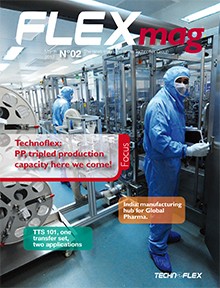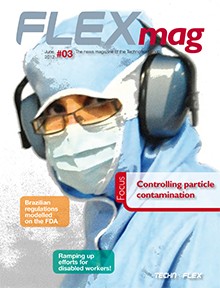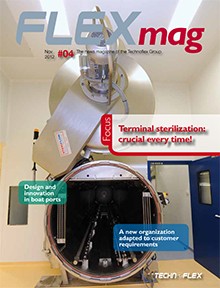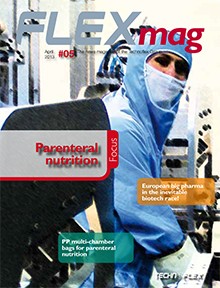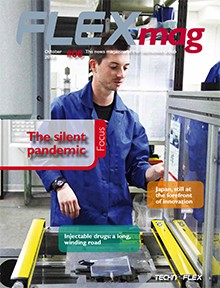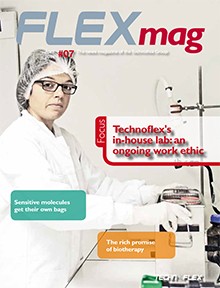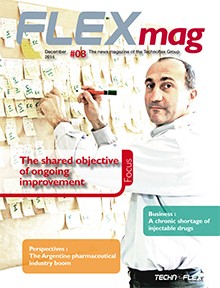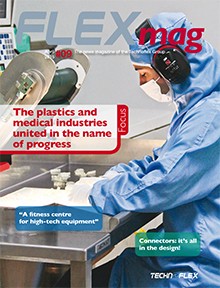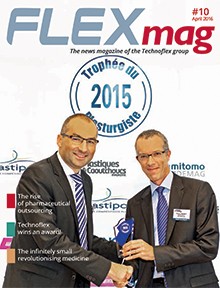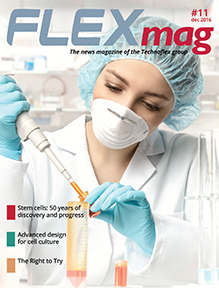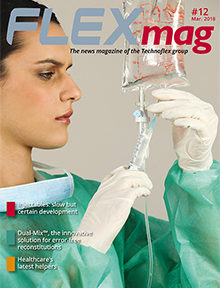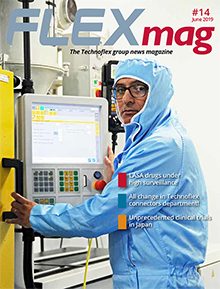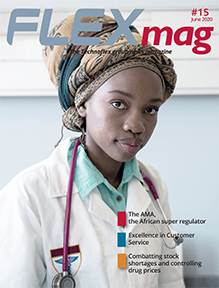Release testing
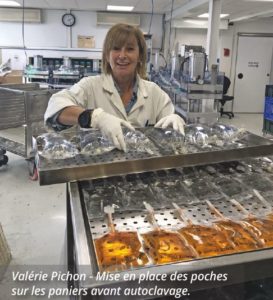 Every day, the Technoflex team in charge of release testing ensures that products are compliant. Eight people check a representative sample of the batches of bags and accessories manufactured. These painstaking tests are carried out in extreme usage conditions.
Every day, the Technoflex team in charge of release testing ensures that products are compliant. Eight people check a representative sample of the batches of bags and accessories manufactured. These painstaking tests are carried out in extreme usage conditions.
Whether they are manufactured in PP, PVC, EVA or FEP, the bags are really put through the mill during the final tests. Their purpose is to ensure that the primary packaging is sound, safe and reliable. The first points checked are the impermeability and resistance to pressure of the bag’s connection system. After being filled and then plugged by an injection port, a cap or a twist-off, the single or multiple chamber bags are sterilized in an autoclave (122°C for PVC, 125°C for polypropylene). They are then checked for an absence of micro-leaks by being pressed at 0.5 bars of pressure. The seals of the tubing, bags and accessories are all inspected minutely. Eva bags, a material which does not withstand the heat of terminal sterilization, are filled directly with water then placed in a press. The same procedure is applied to FEP bags, which are used for the suspension culture of living cells.
The second check is the self-sealing of the injection port. This consists in checking that the elastomer of the port remains totally impermeable after several perforations by needles or spikes.
Faultless physical resistance
During their use in a hospital environment, the bags must withstand being handled on multiple occasions: during storage, transportation to the patient’s room, being dropped, etc. So, they are put through physical resistance tests. The first check involves the bag’s suspension eyelet. In order to prevent any risk of splitting during use at the patient’s bedside, the bags are suspended for one hour for volumes lower than 500 ml, and two hours for volumes greater than that. To this routine test is added a second test in compliance with the ISO 15747 standard. This requires the bag to be suspended for one hour with a weight of 1.5 kg attached to the twist-off. The Drop Test, on the other hand, ensures that the bag is resistant to being dropped. Once full, it is lifted to a height of one meter then dropped onto a rigid, hard, smooth surface at an ambient temperature between 20 and 30°C.
The primary packaging of injectable intravenous solutions must be completely fault free. Product batches are only released after completely passing these essential tests.
Sylvie Ponlot



